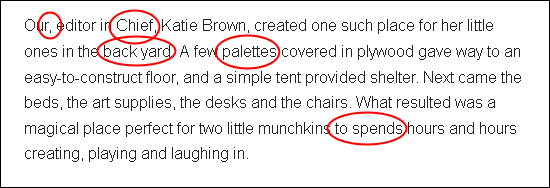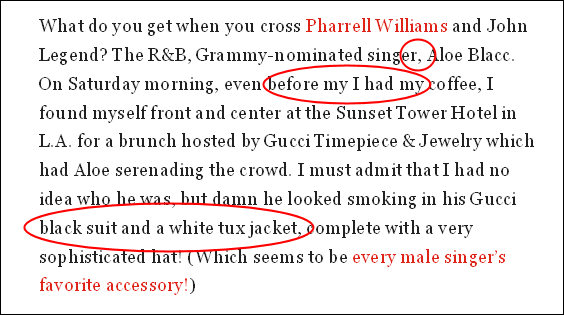Here’s a fun game brought to you by Yahoo! Makers. How many homophonic errors can you find in a single article on the site? It’s really not hard to spot the pales instead of pails:

Searching for homophones, you’ll pass a totally random comma, followed by a totally random capitalized Chief. The split backyard isn’t the worst mistake you’ll come across on the way to the palettes that should be pallets.

You might not notice this (but I did): That paragraph claims the article was written by someone working for Katie Brown. But one look at the article’s byline says otherwise:

Oopsie. Don’t you love it when you catch a writer in a lie?
Back to our homophone hunt: Passing the now one-word backyard, you’re bound to find an error that even your kids can spot:

Overlooking the incorrectly capitalized plywood, you’ll find another palettes:

This is where you’ll find the next homophonic horror, a confusion of where for wear:

Holy moley, there’s another palettes and a comma where a semicolon belongs:

One more palettes? This has got to be the last:

Nope. There’s one more and a little advice, which I take to mean “pallets that are the same height”:

How many did you find? I found these four: Pales/pails. Palettes/pallets. You’re/your. Where/wear. What about you?
























